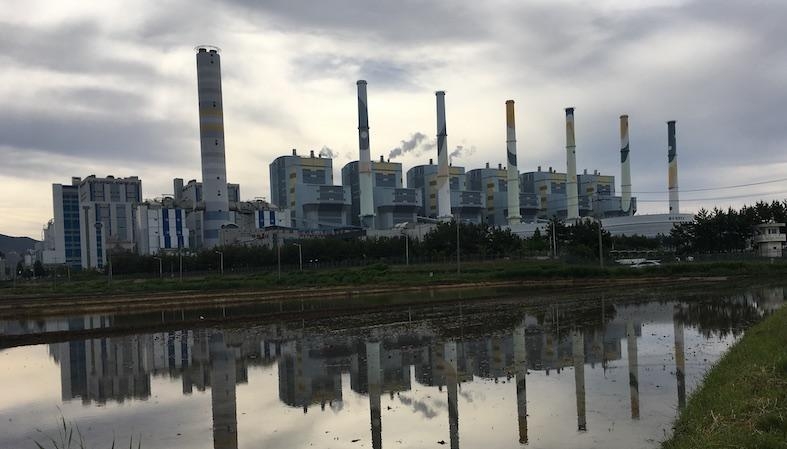Environmental groups criticized the Presidential Committee on Carbon Neutrality for its poor skills in coming up with carbon neutrality plans that still emit greenhouse gas.
Only one of the three options unveiled by the committee for reducing carbon emissions by 2050 will achieve carbon neutrality.
The Korea Federation for Environmental Movements said that announcing carbon neutrality plans despite two of those still emitting greenhouse gas exhibits “poor skills.”
The Energy Justice Actions added that even the third plan that achieves carbon neutrality is not clear when coal-burning power plants and cars with internal combustion engines will come to an end.
The road map results in varying net emissions in 2050 from zero to 25.4 million metric tons.
Seoul National University’s environmental professor Yun Sun-jin, a co-chairperson of the committee, noted that they reviewed the scenario based on the principles of accountability, fairness, innovativeness, inclusiveness, and reasonableness.
Under the first plan, the country will continue fossil fuel use, including coal-fired power plants, which would produce 153.9 million tons of greenhouse gases in 2050. But 95 million tons will be eliminated using carbon capture, and absorbents such as forests will take out 24.1 million tons, while eco-friendly energy would offset it by 9.4 million tons.
It will lead to a total of 24.5 million tons of greenhouse gas emissions produced in Korea in 2050, down 96.5 percent from the 727.6 million tons in 2018.
The second plan will halt coal-fired power plant operations while maintaining liquefied natural gas power plants for emergency use, resulting in net carbon emissions of 18.7 million tons in 2050.
Under the third plan, it would shut down all coal-fired and LNG power plants while increasing renewable energy supply and green hydrogen technology use. It aims to eliminate all greenhouse gas emissions and achieve a “net-zero. The committee will collect feedback, where it would base its decision on coming up with a final blueprint in late October. maximizing the use of existing infrastructure.



 ‘They don’t have enough’ – schools in England are running food banks for families
‘They don’t have enough’ – schools in England are running food banks for families  How agriculture can make the most of one of the world’s biggest carbon sink, soil
How agriculture can make the most of one of the world’s biggest carbon sink, soil  Narendra Modi’s economy isn’t booming for India’s unemployed youth
Narendra Modi’s economy isn’t booming for India’s unemployed youth  Crocs love feral pigs and quolls have a taste for rabbit – but it doesn't solve the invasive species problem
Crocs love feral pigs and quolls have a taste for rabbit – but it doesn't solve the invasive species problem  Frozen in time: old paintings and new photographs reveal some NZ glaciers may soon be extinct
Frozen in time: old paintings and new photographs reveal some NZ glaciers may soon be extinct  Rogue waves in the ocean are much more common than anyone suspected, says new study
Rogue waves in the ocean are much more common than anyone suspected, says new study  Cruel summer ahead – why is Australia so unprepared?
Cruel summer ahead – why is Australia so unprepared?  Economists say Australia shouldn’t try to transition to net zero by aping the mammoth US Inflation Reduction Act
Economists say Australia shouldn’t try to transition to net zero by aping the mammoth US Inflation Reduction Act  Climate change is warping the seasons
Climate change is warping the seasons  New genetic research uncovers the lives of Bornean hunter-gatherers
New genetic research uncovers the lives of Bornean hunter-gatherers  EU enlargement: What does the future hold?
EU enlargement: What does the future hold?  How India’s economy has fared under ten years of Narendra Modi
How India’s economy has fared under ten years of Narendra Modi  River deltas are threatened by more than climate change – leaving hundreds of millions of people at risk
River deltas are threatened by more than climate change – leaving hundreds of millions of people at risk 





























